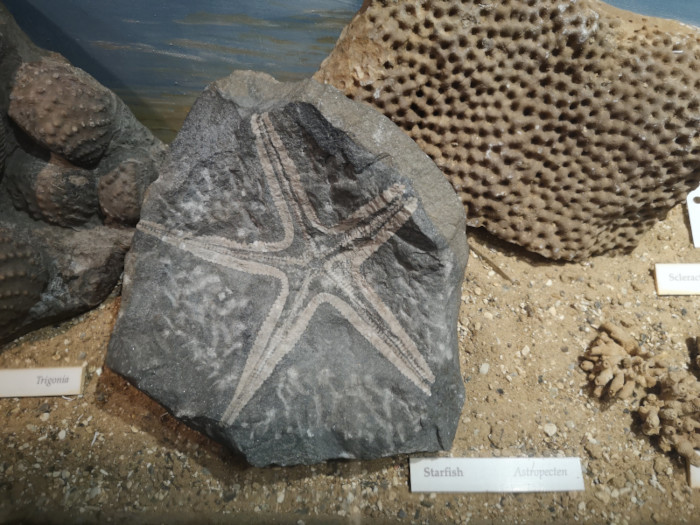Discover more about the constellations of stars and see if you can discover your own!
Salt dough is easy to make and can be used to make all sorts of models - including starfish. This activity will show you how.
Fossil Jurassic star fish from the Sedgwick Museum

Find out how the multi-coloured northern lights are created then have a go at creating your own.
We would love to support your visit to the Botanic Garden, please contact us to discuss a bespoke workshop to suit your needs. We can support subjects across the curriculum, including Science, English and Art. We look forward to hearing from you!
If the workshops listed do not meet your needs we would still love to support your visit to the Botanic Garden, please contact us to discuss a bespoke workshop to suit your needs. We can support subjects across the curriculum, including Science, English and Art. We look forward to hearing from you!
Which do you think is the fastest, or the slowest of three main types of earthquake waves – surface, P waves and S waves? Have a race to find out.
In this activity you will see the difference in compressional P waves, transverse S waves and circular surface waves that are produced by earthquakes. You will need a big group of at least 15 people split into three groups.
This kit contains all the material you will need to make paint using pigments and a medium just as artists did (before ready-mix paint!). You can construct an experiment for students to explore the role of science in both the artist’s and the scientist’s workshop with reference to the technical analysis of the Renaissance painting, Cupid and Psyche by Jacopo del Sellaio. There is material provided with the kit that supports each of the suggested activities below.
Suggested activities
If we look closely, rocks tell us the story of their formation. So, grab your notebook and set out on a mini field trip to find out more about how the formation of a rock reflects its physical properties, and what properties architects look for in a building stone.
Volcanic eruptions are driven by gas dissolved in molten rock (magma) underground trying to escape upwards. But what happens if the gas gets trapped and can't get out?
In this experiment you can trap more and more gas in a sealed container, in the same way gas can get trapped in a volcano, and see what happens...
Download the instructions and information sheet.
Volcanoes form when hot molten rock (magma) under the ground erupts at the surface, but what causes the molten rock to erupt? Eruptions are often driven by gases escaping…
In this experiment you can start a chemical reaction that creates a gas, and see how the gas escaping drives an eruption.
This experiment and video was devised by the Volcano Seismology group in the Earth Science Department, University of Cambridge.
Download the instructions and information sheet.

